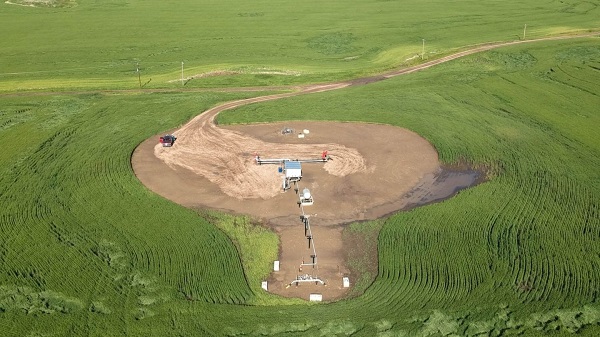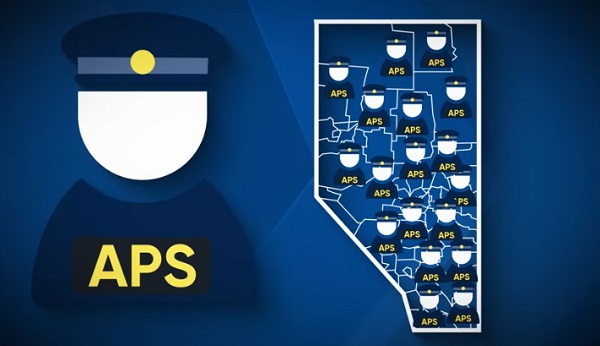Alberta
Debate continues over an Alberta pension plan—but here’s a key fact

From the Fraser Institute
By Tegan Hill
According to documents recently obtained by Postmedia, bureaucrats in Ontario’s Ministry of Finance believe the Smith government’s report released last year on an Alberta pension plan overstates what Alberta could withdraw from the Canada Pension Plan (CPP) to start its own plan. The report estimates that the province’s share of CPP assets is worth $334 billion, which is equal to 53 per cent of the CPP.
It’s not surprising that Ontario civil servants are debating this issue. If Alberta leaves the CPP and creates a provincial pension plan, the savings for Albertans would essentially cost workers in the rest of Canada (excluding Quebec, which already has its own standalone provincial pension). Given that Ontario is the second-largest net contributor to the CPP (behind only Alberta), those costs would fall heavily on Ontarians.
Albertans, like all workers outside Quebec, pay a basic mandatory CPP contribution rate of 9.9 per cent, typically every payday. According to the Smith government’s report, that rate would fall to 5.91 per cent for a new CPP-like provincial program for Albertans, which means each Albertan would save up to $2,850 in 2027 (the first year of the hypothetical Alberta plan). Critically, this lower contribution rate (i.e. tax) delivers the same benefit levels as the CPP.
Meanwhile, the basic CPP contribution rate for the rest of Canada (excluding Quebec) would increase to 10.36 per cent. In other words, smaller take-home paycheques for workers in the rest of Canada.
Currently, Albertans contribute disproportionately to the CPP and other national programs because the province has more workers (and less retirees) as a share of its population, higher employment rates and higher average earnings compared to the rest of Canada. In 2020, the latest year of available data, Albertans contributed about 16 per cent of total CPP contributions but received only 12 per cent of total CPP benefits.
And the federal legislation (Section 113(2) of the CPP Act), which governs the withdrawal of any province from the CPP and the asset distribution calculation, focuses on the amount paid into the fund by Albertans and the benefits paid out (taking into account investment returns and administrative costs).
Bureaucrats in Ontario, however, argue there are issues with the report’s interpretation of the formula. They claim, for example, that the asset distribution calculation fails to account for individuals who worked in Alberta but retired elsewhere. And regardless, they feel the formula should be updated. The Smith government has asked the federal government and investment board to respond to the report with its own interpretation and calculations.
While the debate about Alberta’s share of the CPP assets is sure to continue, it should not distract from the key fact that any reasonable split of CPP assets would result in lower contribution rates for Albertans and likely higher rates for the rest of Canada (excluding Quebec). If Alberta’s share of assets were less than half of what the government report estimates ($150 billion) in 2025, the contribution rate in Alberta would drop to 7.8 per cent, equal to an estimated $1,086 in savings annually per Albertan. Even if Alberta’s share of assets were just $120 billion in 2025, Alberta’s contribution rate would drop to 8.2 per cent and save approximately $836 annually per Albertan.
Clearly, Alberta’s withdrawal from the CPP would come with big savings in the province and increased costs in the rest of Canada.
Author:
Alberta
Alberta’s government is investing $5 million to help launch the world’s first direct air capture centre at Innisfail

Taking carbon capture to new heights
Alberta’s government is investing $5 million from the TIER fund to help launch the world’s first direct air capture centre.
Alberta is a global leader in environmentally responsible energy production and reducing emissions, already home to two of the largest carbon capture, utilization and storage facilities operating in North America, and seeing emissions decline across the economy.
Most of the current technologies used around the world focus on facilities and worksites. Direct air capture offers a potential new way of removing greenhouse gas emissions straight from the air. If successful, the potential is huge.
Through Emissions Reduction Alberta, $5 million is being invested from the industry-led TIER program to help Deep Sky in the design, build and operation of the world’s first direct air capture innovation and commercialization centre in Innisfail. This funding will help Alberta keep showing the world how to reduce emissions while creating jobs and increasing responsible energy production.
“We don’t need punitive taxes, anti-energy regulations or nonsensical production caps to reduce emissions. Our approach is to support industry, Alberta expertise and innovation by helping to de-risk new technology. Direct air capture has some potential and is being looked at in other jurisdictions, so it’s great to see companies choosing Alberta as a place to invest and do business in.”
“Alberta companies are leaders in developing carbon capture and storage technology. Deep Sky has the potential to take the next major step in decarbonization through direct air capture. These advancements and investments through the TIER fund are a major reason why global demand is increasing for our responsibly produced energy products.”
“Investing in Deep Sky supports Alberta’s global leadership in emissions reduction. This project accelerates cutting-edge carbon removal technologies, creates jobs and builds a platform for innovation. By capturing legacy emissions, it complements other climate solutions and positions Alberta at the forefront of a growing carbon removal economy.”
“We are thrilled to be supported by the Government of Alberta through Emissions Reduction Alberta’s investment to help deliver a world first in carbon removals right here in Alberta. This funding will be instrumental in scaling direct air capture and creating an entirely new economic opportunity for Alberta, Canada and the world.”
Deep Sky is helping establish Alberta as a global leader in carbon removal – an emerging field that is expected to grow exponentially over the next decade. The new centre is located on a five-acre site and will feature up to 10 direct air capture units, allowing multiple technologies and concepts to be tested at once. Starting this summer, Deep Sky Alpha’s units will begin pulling in air, trapping carbon dioxide, transporting it by truck, and safely storing it underground at an approved site in Legal.
This new technology will give Alberta’s oil and gas, energy and utilities, cement and heavy industry, and agriculture and agri-tech sectors new technologies to reduce emissions, while creating local jobs and reinforcing Alberta’s position as a global leader in responsible energy development.
Quick facts
- Deep Sky aims to capture 3,000 tonnes of emissions each year and estimates creating 80 construction jobs, 15 permanent jobs, and more than $100 million in local economic benefit over the next 10 years, including regional development in rural communities.
- Research shows that carbon capture technology is safe and effective. Careful site selection and rigorous monitoring serve to ensure the injected carbon dioxide remains sequestered thousands of metres below the surface, with no impact on fresh water, plants or the soil.
- Provincial funding for this project is delivered through Emissions Reduction Alberta’s Continuous Intake Program, funded by Alberta’s industry-funded Technology Innovation and Emissions Reduction (TIER) system.
Related information
Alberta
The permanent CO2 storage site at the end of the Alberta Carbon Trunk Line is just getting started

Wells at the Clive carbon capture, utilization and storage project near Red Deer, Alta. Photo courtesy Enhance Energy
From the Canadian Energy Centre
Inside Clive, a model for reducing emissions while adding value in Alberta
It’s a bright spring day on a stretch of rolling farmland just northeast of Red Deer. It’s quiet, but for the wind rushing through the grass and the soft crunch of gravel underfoot.
The unassuming wellheads spaced widely across the landscape give little hint of the significance of what is happening underground.
In just five years, this site has locked away more than 6.5 million tonnes of CO₂ — equivalent to the annual emissions of about 1.5 million cars — stored nearly four CN Towers deep beneath the surface.
The CO₂ injection has not only reduced emissions but also breathed life into an oilfield that was heading for abandonment, generating jobs, economic activity and government revenue that would have otherwise been lost.
This is Clive, the endpoint of one of Canada’s largest carbon capture, utilization and storage (CCUS) projects. And it’s just getting started.
Rooted in Alberta’s first oil boom
Clive’s history ties to Alberta’s first oil boom, with the field discovered in 1952 along the same geological trend as the legendary 1947 Leduc No. 1 gusher near Edmonton.
“The Clive field was discovered in the 1950s as really a follow-up to Leduc No. 1. This is, call it, Leduc No. 4,” said Chris Kupchenko, president of Enhance Energy, which now operates the Clive field.
Over the last 70 years Clive has produced about 70 million barrels of the site’s 130 million barrels of original oil in place, leaving enough energy behind to fuel six million gasoline-powered vehicles for one year.
“By the late 1990s and early 2000s, production had gone almost to zero,” said Candice Paton, Enhance’s vice-president of corporate affairs.
“There was resource left in the reservoir, but it would have been uneconomic to recover it.”
Gearing up for CO2
Calgary-based Enhance bought Clive in 2013 and kept it running despite high operating costs because of a major CO2 opportunity the company was developing on the horizon.
In 2008, Enhance and North West Redwater Partnership had launched development of the Alberta Carbon Trunk Line (ACTL), one of the world’s largest CO2 transportation systems.
Wolf Midstream joined the project in 2018 as the pipeline’s owner and operator.
Completed in 2020, the groundbreaking $1.2 billion project — supported by the governments of Canada and Alberta — connects carbon captured at industrial sites near Edmonton to the Clive facility.
“With CO2 we’re able to revitalize some of these fields, continue to produce some of the resource that was left behind and permanently store CO2 emissions,” Paton said.
An oversized pipeline on purpose
Each year, about 1.6 million tonnes of CO2 captured at the NWR Sturgeon Refinery and Nutrien Redwater fertilizer facility near Fort Saskatchewan travels down the trunk line to Clive.
In a unique twist, that is only about 10 per cent of the pipeline’s available space. The project partners intentionally built it with room to grow.
“We have a lot of excess capacity. The vision behind the pipe was, let’s remove barriers for the future,” Kupchenko said.
The Alberta government-supported goal was to expand CCS in the province, said James Fann, CEO of the Regina-based International CCS Knowledge Centre.
“They did it on purpose. The size of the infrastructure project creates the opportunity for other emitters to build capture projects along the way,” he said.

CO2 captured at the Sturgeon Refinery near Edmonton is transported by the Alberta Carbon Trunk Line to the Clive project. Photo courtesy North West Redwater Partnership
Extending the value of aging assets
Building more CCUS projects like Clive that incorporate enhanced oil recovery (EOR) is a model for extending the economic value of aging oil and gas fields in Alberta, Kupchenko said.
“EOR can be thought of as redeveloping real estate,” he said.
“Take an inner-city lot with a 700-square-foot house on it. The bad thing is there’s a 100-year-old house that has to be torn down. But the great thing is there’s a road to it. There’s power to it, there’s a sewer connection, there’s water, there’s all the things.
“That’s what this is. We’re redeveloping a field that was discovered 70 years ago and has at least 30 more years of life.”
The 180 existing wellbores are also all assets, Kupchenko said.
“They may not all be producing oil or injecting CO2, but every one of them is used. They are our eyes into the reservoir.”

CO2 injection well at the Clive carbon capture, utilization and storage project. Photo for the Canadian Energy Centre
Alberta’s ‘beautiful’ CCUS geology
The existing wells are an important part of measurement, monitoring and verification (MMV) at Clive.
The Alberta Energy Regulator requires CCUS projects to implement a comprehensive MMV program to assess storage performance and demonstrate the long-term safety and security of CO₂.
Katherine Romanak, a subsurface CCUS specialist at the University of Texas at Austin, said that her nearly 20 years of global research indicate the process is safe.
“There’s never been a leak of CO2 from a storage site,” she said.
Alberta’s geology is particularly suitable for CCUS, with permanent storage potential estimated at more than 100 billion tonnes.
“The geology is beautiful,” Romanak said.
“It’s the thickest reservoir rocks you’ve ever seen. It’s really good injectivity, porosity and permeability, and the confining layers are crazy thick.”
CO2-EOR gaining prominence
The extra capacity on the ACTL pipeline offers a key opportunity to capitalize on storage potential while addressing aging oil and gas fields, according to the Alberta government’s Mature Asset Strategy, released earlier this year.
The report says expanding CCUS to EOR could attract investment, cut emissions and encourage producers to reinvest in existing properties — instead of abandoning them.
However, this opportunity is limited by federal policy.
Ottawa’s CCUS Investment Tax Credit, which became available in June 2024, does not apply to EOR projects.
“Often people will equate EOR with a project that doesn’t store CO2 permanently,” Kupchenko said.
“We like to always make sure that people understand that every ton of CO2 that enters this project is permanently sequestered. And we take great effort into storing that CO2.”
The International Energy Forum — representing energy ministers from nearly 70 countries including Canada, the U.S., China, India, Norway, and Saudi Arabia — says CO₂-based EOR is gaining prominence as a carbon sequestration tool.
The technology can “transform a traditional oil recovery method into a key pillar of energy security and climate strategy,” according to a June 2025 IEF report.
Tapping into more opportunity
In Central Alberta, Enhance Energy is advancing a new permanent CO2 storage project called Origins that is designed to revitalize additional aging oil and gas fields while reducing emissions, using the ACTL pipeline.
“Origins is a hub that’s going to enable larger scale EOR development,” Kupchenko said.
“There’s at least 10 times more oil in place in this area.”
Meanwhile, Wolf Midstream is extending the pipeline further into the Edmonton region to transport more CO2 captured from additional industrial facilities.
-

 COVID-192 days ago
COVID-192 days agoOntario man launches new challenge against province’s latest attempt to ban free expression on roadside billboards
-

 Energy2 days ago
Energy2 days agoThis Canada Day, Celebrate Energy Renewal
-

 COVID-1916 hours ago
COVID-1916 hours agoNew Peer-Reviewed Study Affirms COVID Vaccines Reduce Fertility
-

 Business12 hours ago
Business12 hours agoOttawa Funded the China Ferry Deal—Then Pretended to Oppose It
-

 Alberta1 day ago
Alberta1 day agoAlberta Next Takes A Look At Alberta Provincial Police Force
-

 Alberta2 days ago
Alberta2 days agoCanadian Oil Sands Production Expected to Reach All-time Highs this Year Despite Lower Oil Prices
-

 MAiD14 hours ago
MAiD14 hours agoCanada’s euthanasia regime is not health care, but a death machine for the unwanted
-

 International2 days ago
International2 days agoPresident Xi Skips Key Summit, Adding Fuel to Ebbing Power Theories









